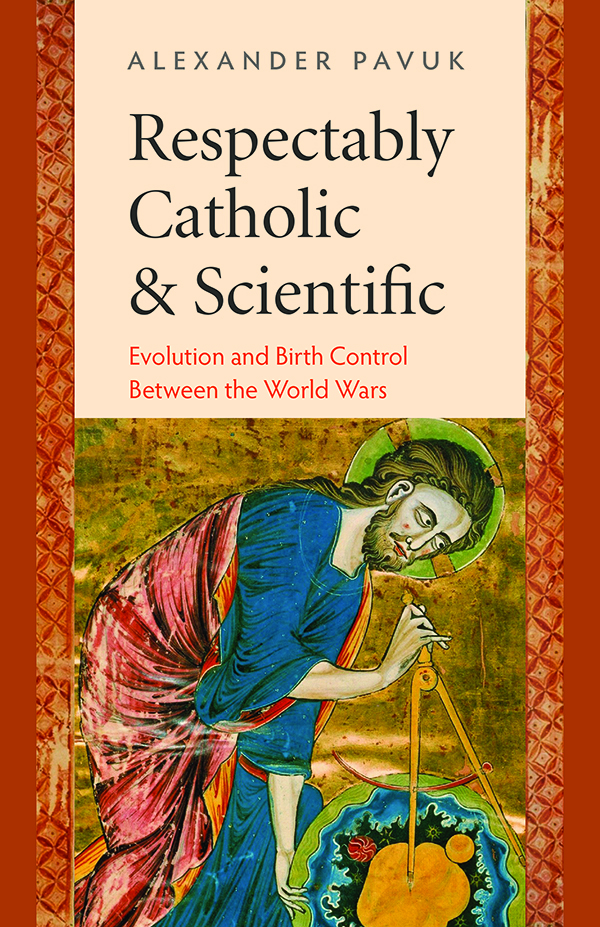The following is an excerpt from Respectably Catholic and Scientific: Evolution and Birth Control between the World Wars by Alexander Pavuk (CUA Press, 2021).
Chapter 1
Three Father Johns
Liberal, Progressive, and Scientific
Directive sociology . . . sets up the true ends of human association and describes the manner in which it should be controlled for the realization of those ends.
—Fr. William Kerby (1912)
Father John Augustine Ryan, midwestern farm boy–cum–Catholic hotline to FDR, never won any contests for charisma. Not long after assuming his post at the Catholic University of America in 1915, he solidified his reputation as an uninspiring and even monotonous lecturer, with one student later conferring upon him the questionable distinction of worst teacher he ever had.1 Colleagues and students alike had a hand in assigning him the nickname “Fog Ryan” as a nod to his ever-present distractedness. His topsy-turvy appearance did little to compensate for these defects; rumpled suits occasionally replete with evidence of recent meals did little to hide the increasing softness of his frame over time. Unkempt eyebrows surmounting large, hollow eyes crowned his rather puffy face, giving Ryan an owl-like appearance especially as he aged. Yet this man possessed a character and tenacity that could not be weighed by mere physiognomy or lecture room persona. Chief among his virtues were a populist sense of fair play, curiosity, and a direct honesty that could border on bluntness but never degenerated into cheap shots or virulence. He was stubborn when it came to what he believed was right, but he could also see other perspectives.2 One of the characteristics that brought him into bad repute with some of his more hesitant co-religionists was a tendency to find any common denominator by which he could justify cooperating even with the irreligious if it meant advancing his social justice interests—even at the expense of framing the questions religiously.3 By his death in 1945, the New York Times eulogized Ryan as “the economist . . . leader of the liberal wing of the Catholic church in America [with an] international reputation and a prestige outside his communion in America that equaled his influence within it.”4 One day after this obituary ran, President Harry Truman said of his death, “a powerful influence in our American life is lost.”5
John Ryan arrived in the American populist heartland of Vermillion, Minnesota, on May 25, 1869, to parents William and Mary Luby Ryan, first-generation Irish Catholic immigrants from County Tipperary, who had fled the lingering ravages of Ireland’s infamous potato famine. The rest of the spare homes in Vermillion, twenty miles south of St. Paul, sheltered other families of a similar ethno-religious makeup and class. All had come to America seeking a life better than that they experienced in the political and economic tempests of rural Ireland.
The eldest of ten children who survived infancy, Ryan later recalled a household imbued with “strict Roman Catholic principles.”6 His father, a mill worker turned small farmer, exuded stiffness and formality, playing to a tee the role of stern and humorless disciplinarian. By the age of sixteen, young Ryan had had enough of his father’s ways, even temporarily running away to a relative’s farm. On the other hand, Ryan had only praise for his mother, invoking words like “warm,” “intuitive,” and others of that ilk to describe her.7

Ryan grew up broad-shouldered from his work on the family farm, a farm to which he would return for summer chores years after he left home to attend seminary. Over time, he grew into a softer version of his once-athletic, baseball-playing youth and was characterizable by words like “gruff, chubby, and earthy.”8 By the time he established himself, he was much more likely to be found intensely grinding away at his desk than performing any but the minimum socializing expected of him in his faculty and priestly positions.9 Even when he was in his seventies, hard work and a direct manner remained trademarks. His biographer, Francis Broderick, astutely notes that these qualities veiled what was, in fact, a lack of both introspection and sensitivity to the subtleties of human motivation, whether others’ or his own.10 He says that Ryan’s notes from his personal journal in 1894 could have been mistaken for a populist political tract.11
Bereft of verbal eloquence himself, Ryan could nevertheless be stirred by oratory provided that the topic interested him. He frequently felt mesmerized as a young man by the elocution of certain Farmer’s Alliance leaders’ speeches, especially those given by a man named Ignatius Donnelly on farm grievances. Donnelly represented a coalition of rural reform clubs that would eventually coalesce into the People’s Party.12
It was an Anglo-Protestant version of Ryan’s midwestern milieu that produced the famous populist-progressive orator William Jennings Bryan. Although both were cut from much the same cloth, these two figures would eventually see themselves on opposite sides of key debates of the 1920s, such as the Scopes Trial and Prohibition (the latter only after Ryan changed his mind and reversed his initial support). One man who would agree with Ryan on the Scopes Trial and much else, yet who emerged from very different circumstances, was Fr. John Montgomery Cooper.
To purchase a copy of Alexander Pavuk’s book, click here.
Footnotes
Epigraph is from William Kerby, “Sociology,” in The Catholic Encyclopedia (1912), quoted in Neusse, “William Joseph Kerby,” 89.
- “Who Was John A. Ryan?,” American Catholic History Classroom, https://cuomeka .wrlc.org/exhibits/show/bishops/ryan/1919ryan-intro (accessed January 25, 2021).
- Francis L. Broderick, Right Reverend New Dealer: John A. Ryan (London: Macmillan, 1963), 2.
- Broderick, Right Reverend New Dealer, 67.
- “Msgr. John A. Ryan, Economist, 76, Dies,” New York Times (September 17, 1945), 19, in John Augustine Ryan Papers, box 74, folder 6, American Catholic History Research Center and University Archive, The Catholic University of America, Washington, D.C. (henceforth ACUA).
- New York Times (September 18, 1945), in Ryan Papers, box 74, folder 6, ACUA.
- John A. Ryan, Social Doctrine in Action: A Personal History (New York: Harper and Brothers, 1941), 7.
- Ryan quoted in Broderick, Right Reverend New Dealer, 2–4, 5.
- Broderick, Right Reverend New Dealer, 6–7, 77.
- Broderick, Right Reverend New Dealer, 36–37.
- Broderick, Right Reverend New Dealer, 168.
- Broderick, Right Reverend New Dealer, 18.
- “After Mass on Sunday . . . Hugh McGuire, the town radical, . . . harangued about the railroad monopoly, [and] John was always nearby. If neighbors dropped in to talk over Alliance issues with William [his father], John was at hand” (Broderick, Right Reverend New Dealer, 18).
